Endangered Species #12 The Ruffed Lemurs
These animals were popularised in the Madagascar film series and continue to be popular animals in zoological facilities, but very little is being mentioned with regard to their rapidly declining populations.
Despite over 90% of Lemur species being classified as endangered there is very little being done to improve the quality of life experienced by wild populations, this article will focus mainly towards the two species of Ruffed Lemur that are both critically endangered and on the edge of extinction.
Description
There are two extant species of Ruffed lemurs alive today, they are the black-and-white Ruffed Lemur (Varecia variegate) – population: 1000-10000 and the red Ruffed Lemur (Varecia rubra) – population: 15000-30000, they are the largest members of the family Lemuroidea and like all Lemur species they evolved independently on the Island of Madagascar and are endemic to the region.
Anatomically and physiologically the two species are not to different from one and other, the only noticeable difference between them arises in the colouration of their pelage (fur), in this regard their non-scientific names describe them very well, as you’d expect the black-and-white Ruffed Lemurs are exclusively black and white in colouration, whereas the red Ruffed Lemurs are predominantly chestnut-red though parts of their body are also black (face, underbelly, tail, hands) and white (nape).
Both species of Ruffed Lemur reach a head-body length of between 40 to 60 cm when fully grown, with the length of their tail included this rises to 100-120 cm as such their tail is regularly longer than their overall body length, on average they reach a healthy bodyweight of between 3 and 4.4 kg’s.
Males and females of both species grow to a similar size and do not display sexual dichromatism (colouration is identical), the differences between the two sexes are non-visible unless a female has recently given birth, after which her three pairs of mammary glands will be noticeable, sexing of young is only possible through inspection of the genitalia.
Aside from their large size their two most distinguishable features from other Lemurs is their long canine-like muzzle with a distinguishable overbite, and their “ruff”, which is a mane of soft pelage that extends from the underside of their neck , around the back of their head and lopped over their Ears, the top of their head has a much thinner layer of pelage which gives the Ruffed Lemurs a very distinctive appearance.
The dentition of Ruffed Lemurs can appear quite menacing, similar to ourselves they possess a combination of Incisors, Canines, Premolars and Molars though they have 36 teeth instead of our own 32, they also possess a unique formation of teeth known as a Toothcomb, in Lemurs the Toothcomb consists of four Incisors and two Canines, the six teeth are finely spaced and function much in the same way as a hair-comb functions, as such this dental formation is used regularly when grooming.
Another unique adaptation that aids in grooming can be seen on their feet, specifically on their second toe, they have a lengthened claw known as a toilet-claw which is also known as a grooming claw, the claw is used to rake through their fur as well as to satisfy any deep itches, it’s mainly used for grooming around the head and neck area.
Habitat and Diet
The most accurate description regarding the lifestyle of Ruffed Lemurs would be highly arboreal and sociable, they very rarely venture to the ground as they are vulnerable to ground-dwelling predators such as the Fossa, by spending the majority of their time in the upper section of trees which is often 20-30 metres above the ground, they can live a largely carefree lifestyle.
Like all Lemurs they are naturally endemic to the island of Madagascar, they evolved independently from other Primates and are thought to have arrived and evolved further on the island for at least the past 40 million years, though fossil records estimated the first Lemurs evolved approximately 65 million years ago on the African continent.

Distribution of Ruffed Lemurs, with black-and-white represented in green, and red represented in red
Before the arrival of Human settlers 2000 years ago they were the dominant family on the island inhabiting as much as 95% of the available land mass, today Lemurs inhabit less than 10% of the available land, black-and-white Ruffed Lemurs have a fairly large range from the north-east corner of the island down to the south-east corner though their range is very patchy, red Ruffed Lemurs on the other hand are confined to a small corner in the north-east of the island, both species were once frequent across the eastern coast of the islands tropical rainforests.
They most commonly choose to inhabit large fruit-bearing trees as fruit makes up a large portion of their overall diet, of all the species within the Lemuroidea family they are the most frugivorous and their diet can consist of as much as 92% fruit, with the vast majority of the fruit being varying species of Fig.
Aside from fruits the rest of their diet consist of newly sprouted leaves, blossomed flowers and seeds, they are also the main pollinators of Travellers Palm trees on the island of Madagascar, using their long muzzles they consume nectar from the flowers present on the tree, as the move from tree to tree they pollinate in the same way an insect would, by size they are the largest known pollinators on the planet.
Ruffed Lemurs are diurnal meaning that they are most active during the day, despite this their vision in darkness is surprisingly impressive and is superior to our own, this may help them to feed during the hot season where they spend less time in the upper reaches of the canopy, feeding at night allows them to consume the young leaves, flowers and fruits in the upper reaches of the canopy in comfort.
Reproduction
As mentioned they are sociable animals, highly sociable in fact, they have been documented to exist in groups of up to 32 animals and the group may appear to be made up of several sub-groups and core-groups, their social structures are highly variable though there does not appear to be a difference at a core-level between the two Ruffed Lemurs Species.
Most core-groups consist of at least two breeding females and multiple males, the social structure of the core-groups is not completely obvious, most Lemurs are matriarchal, though Ruffed Lemurs appear to display a different social structure depending on the time of the year, instead a separate hierarchy of males and females is more commonly observed, core-groups consist of animals that are commonly observed together on a regular basis.
Sub-groups on the other hand differ from day-to-day, varying in both group size and individuals present, sub-groups are often made up of individuals from core-groups that have ventured from their usual group for a short period of time, as such sub-groups can be described as a fission-fusion society, the combination of sub-groups and core-groups within a geographic range can be referred to as a community.
Female Ruffed Lemurs form very close social bonds with other females within local core-groups and sub-groups within their wider community, as such females are cooperative to one and other and can regularly be observed grooming one and other and sharing food, males are the complete opposite of this and display agnostic behaviour, despite existing in groups the males often display solitary behaviour and may fight one and other for prime feeding opportunities.
Furthermore, males will often stay within their core-range throughout the year whereas females will regularly adventure throughout their community when they are either rearing young or during the gestation period, the only time of the year females remain stationary within the core area is during the mating season.
The mating season for Ruffed Lemurs coincides with the cool-dry season which begins in May and runs through to October.
Contrary to previous beliefs, Ruffed Lemurs are not monogamous during the breeding season and both males and females will mate with multiple partners during the season, of the two sexes the females are pickier when deciding whom to breed with and females will often prefer to mate with males that they had prior relations with.
Despite preferring males within their core-group / community breeding does not occur exclusively within a community, during the breeding season individuals from various communities may cross in to different territories to breed, this act yields surprisingly little aggression in itself though both sexes display heightened aggression when choosing and analysing a potential mate.
When females enter Oestrous they undergo a physiological change which results in the skin surrounding their genitalia swelling, this peaks around day 15 of the Oestrous cycle and is when the female is most receptive, both males and females approach one and other and courtship is normally initiated by either them male lowering his head in conjunction with a vocalisation followed by inspection of her swollen genitalia, or the female adopting a mating position, once paired they may mate multiple times in a short space of time, the mating season lasts until the end of July.
Ruffed Lemurs are strange amongst Lemuroidea in a number of ways, they have the shortest gestation period of any Lemur, averaging just 102 days, they also have an average litter size of 2-3 offspring, these two traits are similar to those seen in smaller, nocturnal Lemurs.
Their offspring are altricial and are born with their eyes open whilst also possessing a full coat of fur, the term altricial simply means that the offspring are not mobile from birth and require full care from their parent(s) to ensure survival, Humans are an altricial species, the opposite of altricial is precocial, an example of a precocial animal is a Swan.
Ruffed Lemurs are the only Primate species that construct arboreal nests for their young, they use the nests in the same way that Birds regularly nest, during the day their mother will leave them within the nest to feed, once fed she will return to feed her young who are reliant on her milk for the first two months of their lives and will be completely weaned after six months, after the first two weeks the mother will begin to carry her young with her when feeding, opting to stash them within the foliage instead of leaving them in the nest.
Females reach sexual maturity by the age of two years old whereas males are sexually mature by four years old, females typically have a gap of one year between each birthing interval and will be able to mate up to the age of twenty-three years old, the lifespan of Ruffed Lemurs is estimated to be 36 years of age though this is based on observations of captive individuals.
Threats to the Ruffed Lemurs
There are three main threats to both species of Ruffed Lemur, as well as most other Lemur species on Madagascar, there are roughly 100 different species of Lemur on Madagascar and 90% of them are classified as either Endangered or Critically Endangered with estimates that they those classified may be extinct within the next 20-25 years, the IUCN considers Lemurs to be the most endangered group of Mammals on the planet.
The first threat faced by Ruffed Lemurs is the most profound and it comes in the form of deforestation leading to habitat loss, whilst the black-and-white Ruffed Lemurs range extends across the eastern coast of Madagascar, the red Ruffed Lemur is isolated to a single region in the north-east called the Masoala peninsula.
Between October and December deforestation of hardwood trees occurs in the Masoala peninsula, the deforestation occurs to gather the wood as a resource/commodity, as well as to clear the land for agricultural expansion, though unregulated logging is illegal the ban is not enforced, and the methods used for deforestation can be catastrophic.
If you’ve been following me from early on you may remember a post that I wrote about the Orangutans of Borneo, in that article I mentioned the deforestation method of slash and burn which essentially just involves cutting and burning large swathes of land to effectively clear out flora and fauna to produce land for agricultural purposes, sadly this method is growing in popularity despite being illegal, animals in the path of this method are often burned alive as they are unable to escape from the upper canopy of the rainforest.
Deforestation not only puts strain on the Ruffed Lemurs regarding viable habitable land, it also puts a massive strain on their dietary requirements, as obligate frugivores they are completely reliant on the fruit-bearing trees to survive, as the number of trees reduces annually the risk of starvation within communities becomes a very real threat, since monitoring of forest cover began in 1950 Madagascar has seen its forest cover reduced by 60% and the forest continue to disappear at a rate of roughly 100,000 hectares per year, this is obviously not sustainable.
The second major threat to the Ruffed Lemurs arises in the form of poaching, Lemurs are still regularly hunted for their meat and in more recent times for use in the illegal pet trade.
Hunting of all Lemur species is banned on Madagascar though this is not enforced in any meaningful way, hunting occurs through both active hunting and trapping, hunters prefer to use firearms when hunting the Lemurs and they take advantage of the fact that Ruffed Lemurs are vocal animals who are not too difficult to locate, black-and-white Ruffed Lemurs are being hunted unsustainably by locals who continue to view them as a desired source of meat.
In the Masoala peninsula the preferred method for capturing the red Ruffed Lemur involves the use of traps, the most frequent method used is known as Ialy, this method involves clearing a section of forest roughly 5 metres in diameter and leaving only a few branches to allow the Lemurs to cross to another section of the forest, the remaining branches are adorned with snares which effectively catch often starving Lemurs.
As the forests are an important part of the Madagascan economy deforestation is likely to reduce one day which may see the government enforce laws in relation to illegal deforestation, this is sadly not the case for hunting, and a lot of work will be required to educate people on the importance of the animals they share the island with, this will likely be too late for many species that face a very real risk of being hunted to extinction.
The last threat is currently more relevant to red Ruffed Lemurs and it arises from their isolated range, as climate change increases the likelihood of freak weather incidences such as cyclones, a particularly powerful weather event could have a catastrophic impact on a species that exists in only one area, as their range shrinks even further this risk is only going to increase over the upcoming decades.
Conservation
In most cases the survival of a threatened species requires a protected region with a dedicated approach to enforcing laws that can ensure the region remains in good condition, for red Ruffed Lemurs the only protected area of their territory is the Masoala national park, which coincidently, despite being protected, was the most heavily impacted national park on the island by illegal deforestation, political instability in the region has had a profoundly negative impact on the governments ability to police its own laws and corruption is not uncommon.
The protection offered to black-and-white Ruffed Lemurs is not that much better than that seen for red Ruffed Lemurs, policing of protected sites is not overly effective and as such the population of the black-and-white Ruffed Lemur has dropped by over 80% in the past 30 years, this downward trend is showing little sign of slowing and wild populations are under serious threats of extinction.
Both species have fairly successful captive breeding programs and the majority of captive animals exist in North American and European facilities, there are more than 500 individuals of both species in captivity and these have been assessed to be a viable protection population against extinction though some researchers have doubts on the genetic viability of the populations as a whole.
Conservation groups do exist for both species in the form of organisations such as the Madagascar Fauna Group (MFG) and the Lemur Conservation Foundation (LCF), both of these organisations work to protect many species of Lemur present on Madagascar by offering aid in the policing of protected sites, as well as working to educate local populations in to the plight of Lemurs and what can be done to save them.
The MFG are also working to establish a healthy wild population of reintroduced black-and-white Ruffed Lemurs, and from 1997-2001 they displayed that such a project would be possible after they successfully released three groups totalling 13 individuals back in to the wild, whilst mortality of released individuals was over 50% there were still positive signs and at least one animal was able to integrate with a wild group, the project has sadly been halted due to habitat degradation, fragmentation of populations and continued illegal poaching.
The MFG is comprised of 37 individual private organisations and the bulk of their work is funded through donations, you can donate to the MFG HERE.
As previously mentioned over 90% of Madagascar’s Lemurs are endangered, this presents a rare problem in that there are almost too many animals under threat to simply focus on the survival of one species, it’s a sad reality but private organisations will not be able to save Madagascar’s fauna alone and unless a serious change occurs with regard to the money spent on maintaining the health of the islands forests most of the hard work conducted by groups such as the MFG will have been for nothing, the governments actions will inevitably decide the fate of hundreds of animals species.
Final Thoughts
It’s sad because I find endemic island species to be highly interesting, the notion of an animal or group of animals evolving independently from everything else on the planet is a sobering thought, before Humans arrived Lemurs essentially existed in their own little (still large) version of Earth.
The thought that their decline is 100% attributable to Human expansion and recklessness is terribly upsetting and it’s not an entirely impossible thought that within the next century the island of Madagascar will no longer be home to any Lemur species, and thus the world itself will be devoid of any wild territories containing Lemurs, whilst captive breeding programs are proving to be effective, I can only hope that the fortunes of this incredible group of animals improves on the island that they once dominated for over 40 million years.
Content Sources
- IUCN Red Ruffed Lemur
- IUCN Black-And-White Ruffed Lemur
- Ruffed Lemur Social Structure & Reproduction
- Madagascan Deforestation
- Lemur Extinction Crisis
More Endangered Species
If you found this edition of Endangered Species interesting, you may be interested in my previous posts:
- The Amur Tiger
- The White Rumped-Vulture
- The Yangtze Finless Porpoise
- The Saiga Antelope
- The Javan Slow Loris
- The Kakapo
- The Red Panda
- The Vaquita
- The Amur Leopard
- The Northern White Rhinoceros
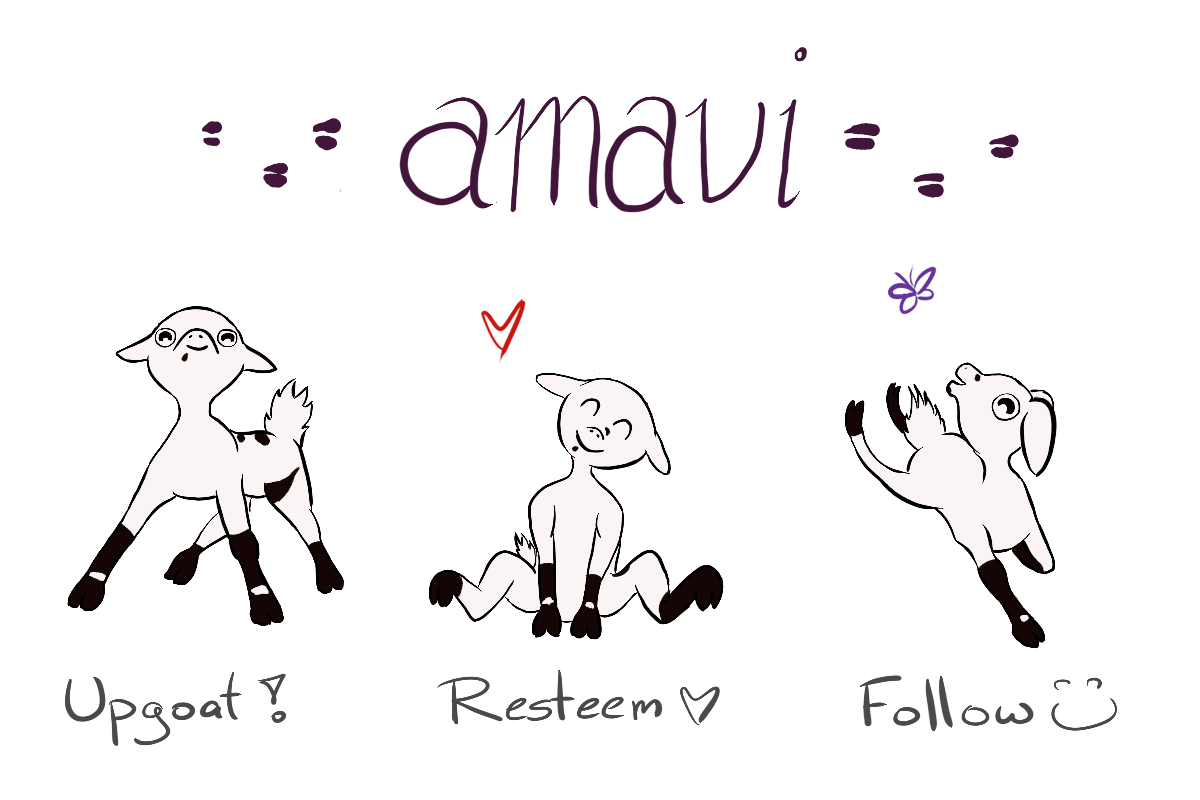
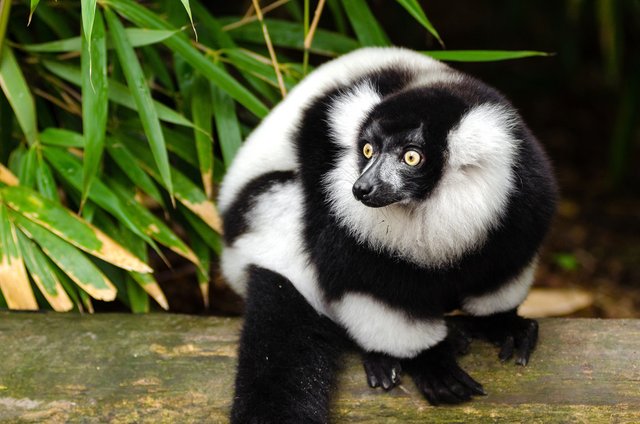
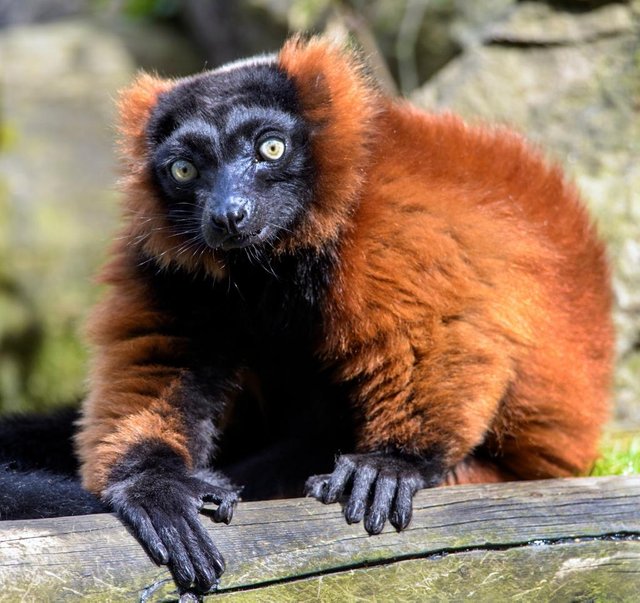
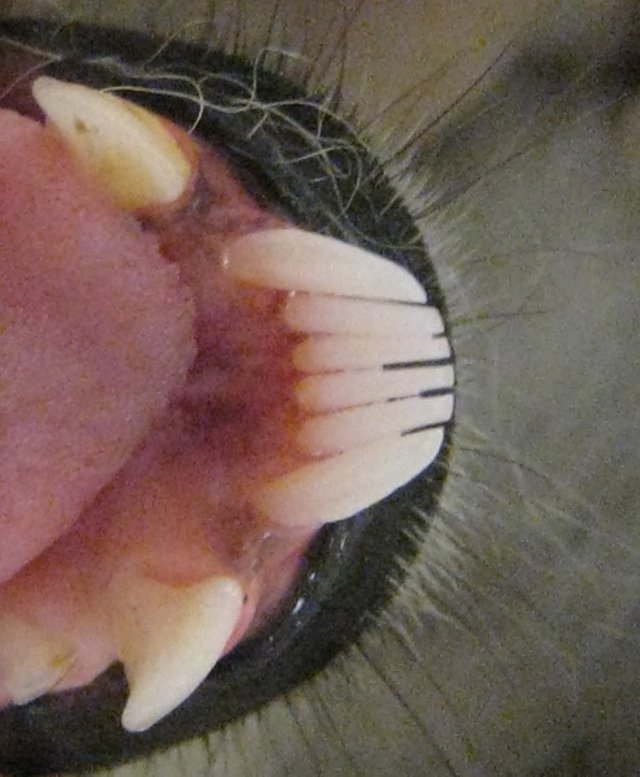
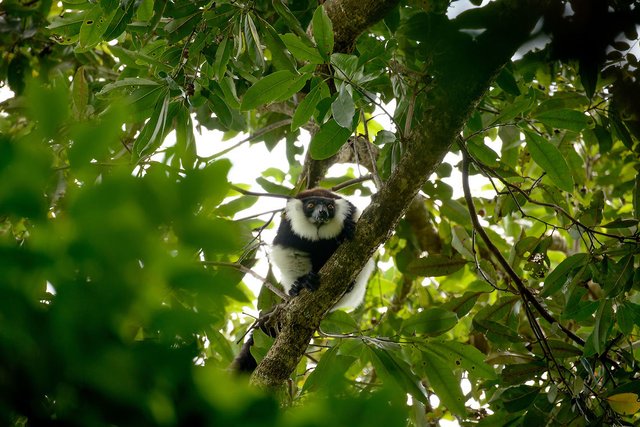
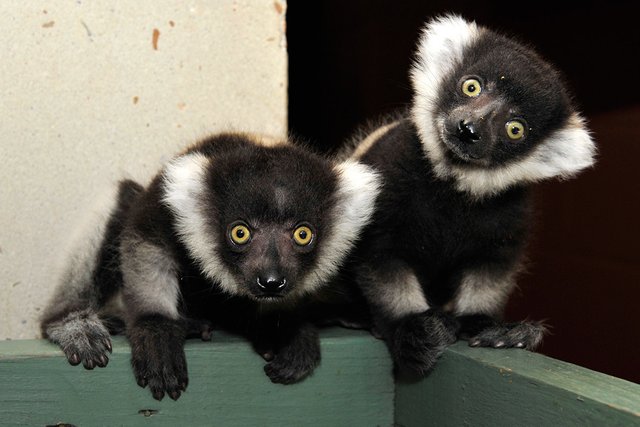
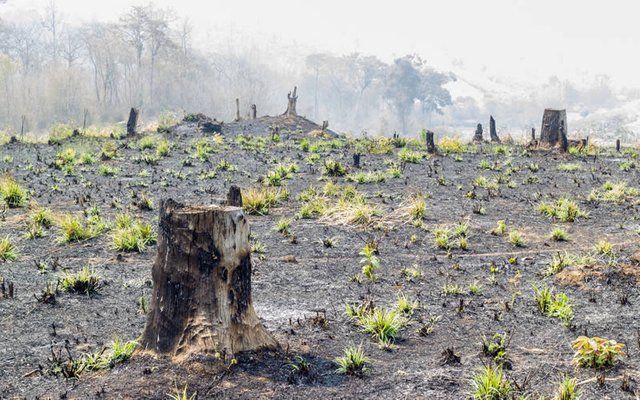
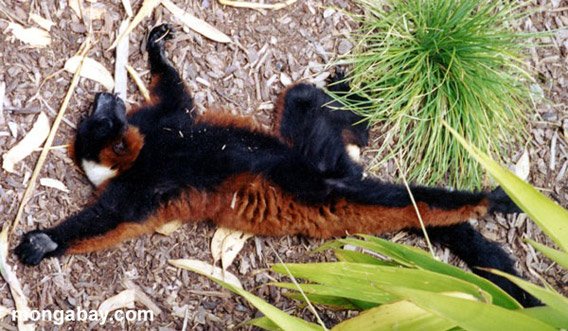
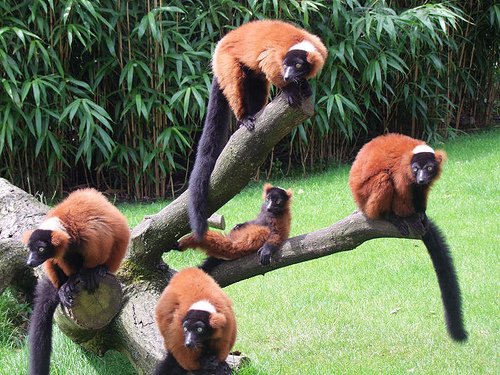
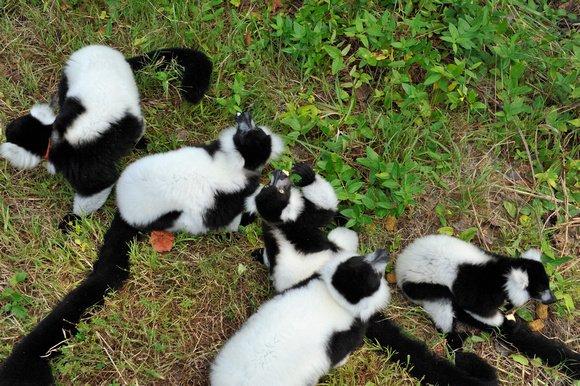
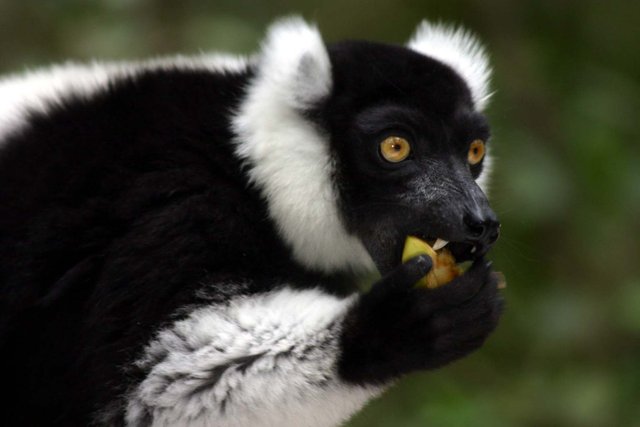
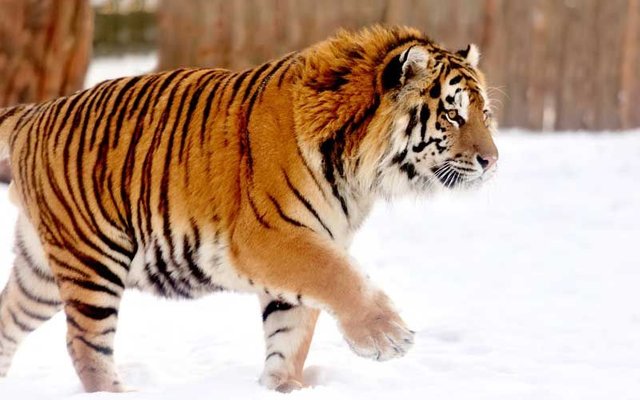
Being A SteemStem Member
Its a shame this species is actively hunted. Hopefully education programs help reduce hunting and poaching.
My mother is a biologist. I lived in Brazil when I was a kid and sometimes she would go to the Amazon rain forest to rescue endangered animals by devastating floods. So we had lots of exotic animals for a small period of time in our house like snakes, lizards, birds and so on. I just love animals so much. We would return them home when everything was ok, it was an incredible experience.
I can't believe people actually hunt animals like Ruffed Lemurs. I don't think hunting is a nice thing though. Maybe when humans were living in tribes hundreds of years ago it was understandable or to control birth rates of certain species but that? Crazy.
Thanks a lot for this post, I wish I could up vote more than once.
Oh that sounds like you had an incredible childhood! It's important that children are taught to respect animals from a young age.
Hunting is required for certain species, mainly prey animals that have no natural predators alive today, though I am completely against the hunting of vulnerable species, and I feel that any hunting should be heavily regulated and monitored.
I'm glad you enjoyed the post! :)
I just want to say: bloody humans :(
Make that two!..
Tell me sir, is there something we haven't tried to hunt and kill yet? :(
probably... I don;'t want to know
lol! Looking at that pic of them as infants, that's exactly how I imagined them being born, eyes blaring wide, but I thought I was imagining something funny, but it turns out to be true!
Well-written and informative post as always. The lemurs' doing so well in captivity can almost be seen as a negative sign, since it means there might be less of a willingness to preserve the wild populations.
Resteemed to over 14200 followers and 100% upvoted. Thank you for using my service!
Send 0.200 Steem or 0.200 Steem Dollars and the URL in the memo to use the bot.
Read here how the bot from Berlin works.
We are happy to be part of the APPICS bounty program.
APPICS is a new social community based on Steem.
The presale was sold in 26 minutes. The ICO will start soon.
Read here more: https://steemit.com/steemit/@resteem.bot/what-is-appics
@resteem.bot
Lemur A: Hey guys, should we tell them the ship's outta gas?
Lemur B: No. Just smile and wave son, smile and wave.
Culled from madagascar 1. at the end when the animals were gonna return to the zoo
I loved this cartoon. been years since i saw it.
Love your writing @amavi. second to none in this niche!
Many endemic species are very interesting, when you consider the way they evolved and their uniqueness over other species. That said, it's true and sad that many species - both endemic and common in many habitats - are currently endangered, mostly due to human activity, that doesn't always have to take place in that exact location.
I do hope people learn to act more responsibly towards their (our) environment, and leave a better place for our children.
Great post, I'll be following to see what else you'll write in the future. I hope you follow back and keep in touch :-)